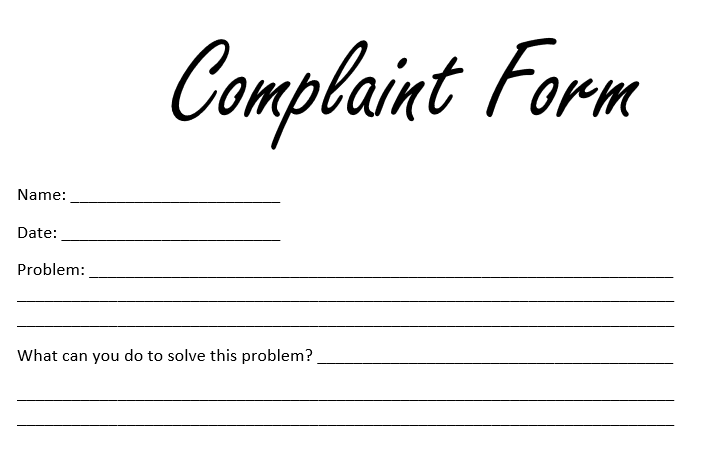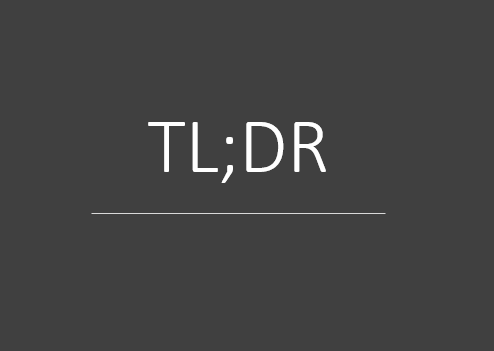Last week’s announcement by the Department of Education that “consistent with the decision of the U.S. District Court for the Northern District of California…. As of May 26, 2019, the amendments to 34 CFR 600.2, 600.9 (c), 668.2, and the addition of 34 CFR 668.50… are effective” was the culmination of a long, strange regulatory journey that started a decade ago. Overlooked in the discussion of whether or not an estimated 80,000 California residents enrolled in distance education programs could access financial aid was the potential impact the regulations could have on institutions beyond California. In today’s blog post, we’ll take a quick look at the long, strange journey that brought us to last week’s announcement, what regulations are now in effect, and where institutions go from here.
How we got here

- 2009-2010: In 2009, the Department of Education convened a negotiated rulemaking committee to address, among other things, state authorization. During those convenings, negotiators raised concerns that distance education and state authorization needed to be directly addressed. Unfortunately, the negotiators were unable to reach consensus and when the Department released the proposed regulations for public comment in June 2010 there was no mention of distance education and state authorization. However, the Department attempted to remedy this oversight by including when it released the final regulations in October 2010.
- 2011-2012: On April 20, 2011, the Department indicated that it would be delaying the implementation of 34 CFR 600.2, 600.9 (c), and 668.2 until July 1, 2014 in order to give institutions and states time to comply with the regulations. Later that year the Career College Association filed a lawsuit against Secretary of Education Arne Duncan in the U.S. District Court for the District of Columbia claiming that the Department had not provided stakeholder the opportunity to comment on these regulations and, therefore, they could not be enforced. In 2011, the District Court ruled in the Career College Association’s favor and on June 5, 2012, the U.S. Court of Appeals for the District of Columbia upheld the lower court’s ruling. As a result, the regulations in question were vacated.
- 2014: In an effort to address the vacated regulations, the Department convened another round of negotiated rulemaking in 2014 to address distance education state authorization issues and the role that a reciprocity agreement could play in fulfilling authorization requirements. Negotiators did not reach consensus.
- 2016: The Department released new proposed regulations for public comment in July that included 34 CFR 600.2, 600.9 (c), 668.2, and the addition of 34 CFR 668.50. The Department released final regulations in December and announced that the regulations would go into effect on July 1, 2018.
- 2018: The Department announced in May that it intended to delay implementation of the regulations until July 1, 2020. On July 3, 2018, the Department officially published its intention to delay the implementation of the regulations until July 1, 2020, two days after the regulations technically went into effect. Meanwhile, the Department announced its intention to undergo negotiated rulemaking during the first half of 2019 to address several points of confusion regarding distance education, state authorization, and various notification requirements. In August the National Education Association (NEA) and others filed a lawsuit against Secretary of Education Betsy DeVos in the U.S. District Court for the Northern District of California claiming that the Department did not have the authority to delay implementation of the regulations because the Department did not use the negotiated rulemaking process to issue the delay.
- 2019: Members of the negotiated rulemaking committee reached consensus on regulations overhauling distance education state authorization and institutional notifications. However, on April 26, 2019, the Northern District of California court ruled in the NEA’s favor and ordered the Department to begin enforcement of the regulations on May 26, 2019. On May 6th, WCET and the State Authorization Network wrote a letter to the court and the Department of Education about the need to mitigate the impact of immediate implementation of some of the rules. On July 22nd, the Department announced that 34 CFR 600.2, 600.9 (c), 668.2, and 34 CFR 668.50 were now in effect.
What’s in effect
It’s understandable that most of the attention for the last week has been on the question of what happens when an institution enrolls students in a state that is not a part of a reciprocity agreement and does not have a complaint process for its residents to use.

For a great explanation of those challenges, take a look at last week’s blog post by Cheryl Dowd and Russ Poulin. Since last week, California believes that it has created an appropriate complaint process and the Department of Education is reviewing it. Unfortunately, several other portions of the 2016 regulations that are now in effect have gotten lost in the shuffle. Below is a synopsis of 34 CFR 600.2, 600.9 (c), 668.2, and 34 CFR 668.50 that are now in effect.
- Authorization & Process for Review—34 CFR 600.9 (c)
- Institutions must meet the state requirements (if any) in the states the institutions offer post-secondary distance education. Note, this officially ties financial aid eligibility for students in a state to having the proper approval(s) in that state.
- Institutions must, upon request, document the state’s approval; or
- Document the institution’s participation and coverage by a reciprocity agreement.
- Explain the consequences for a student who changes their state of residence.
- Institutions must document that there is a state process for reviewing complaints and taking any appropriate actions:
- In each state which the institution’s enrolled students reside; or
- Through a reciprocity agreement.
- Institutional Disclosures for programs completed solely through distance education (excluding internships and practica). There are both “public” (often accomplished by posting on a website) and “individual” (sent directly to a student or potential student via mail or e-mail) disclosures.
- Public Disclosures—34 CFR 668.50
- Whether authorized by each state where students reside.
- Description of the process for consumer complaints:
- At the state agency in the state the institution is located; and
- As designated by the reciprocity agreement.
- Description of the process for consumer complaints where the programs’ students reside.
- Adverse actions a State entity as initiated related to programs offered solely though distance education for the five calendar years prior to the year of the disclosure.
- Adverse actions initiated by an accrediting agency related to programs offered solely though distance education for the five calendar years prior to the year of the disclosure.
- Applicable State refund policies by a state in which enrolled students reside.
- Professional Licensure Disclosures
- Provide the applicable educational prerequisites for professional licensure or certifications for the occupation for which the program prepares the student in:
- Each state in which the program’s students reside; and
- Any other state for which the institution has made a determination about prerequisites.
- Determination whether the program satisfies the state requirements for professional licensure or certification; and
- If the program does not meet state requirements, then a statement to that effect.
- Individualized Disclosures—34 CFR 668.50
- To prospective students: any determination that the program does not meet state prerequisites for professional licensure or certification in the state the student resides.
- To enrolled and prospective students:
- Adverse actions by state or accrediting body within 30 days of awareness of the action.
- Change that program no longer meets prerequisites in the state within 14 days of that determination.
- For a prospective student who receives a disclosure about a program not meeting prerequisites and subsequently enrolls in the program, the institution must receive acknowledgement from that student that the disclosure was received and demonstrated receipt of the student’s acknowledgment.
What should you do?
Last week’s announcement that the 2016 regulations are now in effect are further complicated by the fact that the proposed state authorization regulations the Department released for public comment in June (and are likely to go into effect July 1, 2020) will be a departure from the current 2016 regulations. For a more detailed review of those proposed regulations, check out WCET’s June 13th and June 14th posts.  The TL;DR (too long; didn’t read) version, though, is that enough differences exist between the 2016 regulations now in effect and the likely 2020 regulations that we believe that many institutions, especially those with small state authorization offices will not have the resources to both comply with the 2016 regulations while simultaneously preparing for the 2020 regulations. While the impact on students has received all of the attention in the news, institutional personnel have been put in an untenable situation. They are asked to immediately implement the 2016 rules which remain unclear in several places. Additionally, institutional state authorization staff must also now prepare to implement a different set of rules that will likely go into effect next year. In WCET’s comments to the Department of Education on the proposed regulations, we raised these concerns and hope that the Department will address this challenge when the final regulations are released lest students be inadvertently harmed in the process. In the meantime, though, what should you do?
The TL;DR (too long; didn’t read) version, though, is that enough differences exist between the 2016 regulations now in effect and the likely 2020 regulations that we believe that many institutions, especially those with small state authorization offices will not have the resources to both comply with the 2016 regulations while simultaneously preparing for the 2020 regulations. While the impact on students has received all of the attention in the news, institutional personnel have been put in an untenable situation. They are asked to immediately implement the 2016 rules which remain unclear in several places. Additionally, institutional state authorization staff must also now prepare to implement a different set of rules that will likely go into effect next year. In WCET’s comments to the Department of Education on the proposed regulations, we raised these concerns and hope that the Department will address this challenge when the final regulations are released lest students be inadvertently harmed in the process. In the meantime, though, what should you do?
First, and foremost, talk with your legal counsel and determine what level of risk your institution is willing to accept. The Department has not adequately addressed several of the gray areas in the 2016 regulations; they were counting on the delay until the new regulations would likely go into effect in 2020. As a result, there continues to be uncertainty around things such as residency versus location and student complaint processes. Your legal counsel is in the best position to provide you with their interpretation of the 2016 regulations and the extent to which your institution is in or out of compliance.
If you are part of an institution that is participating in SARA, you should remember that although reciprocity covers institutional approval from the state’s higher education agency, you may still be required to get approval from the appropriate professional licensing board/agency for any distance education programs that result in professional licensure.
For SARA institutions, this means that you should:
- Make sure you know exactly where your distance education students are located; and
- Make sure you have received the appropriate state approvals (if any are needed) for your programs that lead to licensure, especially if they are not covered under SARA, in those states.
If your institution does not participate in SARA or you are in a state that is not a part of SARA, you should:
- Make sure you know exactly where your distance education students are located;
- Make sure you have received the appropriate state authorization for your programs, including from both the state higher education agency as well as any appropriate state professional board/agency licensure programs; and
- Make sure you are providing students with the correct information on student complaint processes for those states.
Additionally, every institution should:
- Make sure you understand what the 2016 regulations require regarding public and individual disclosures, especially disclosures around adverse actions and licensure requirements;
- Work with your institution’s legal counsel to determine your institution’s level of acceptable risk around compliance; and
- Be ready to start working on new processes for the proposed 2020 regulations.
A final few caveats
All this information is as of the time of this writing. There are other balls that are still in the air that we are waiting to see where they land, such as:
- California has proposed a complaint process for students enrolled in out-of-state distance education programs at public and private institutions. The process is now being reviewed by the Department of Education and while we expect that the Department will approve it, there is no guarantee. While we hope that this issue will soon be resolved, you should work with your institution’s financial aid office, legal counsel, and others on what next steps you might need to take.
- WCET and SAN are working with our WICHE colleagues to make sure that the student complaint processes are clear in other states and territories.
- We hear that the Department could have the final version of the 2020 regulations ready for release in the next one to two months. It’s possible that the Department could implement a portion or all of those regulations on an emergency basis. The benefit of that action would be to lessen confusion in the field and allow institutions to focus only on the final set of regulations rather than attempting to simultaneously enforce the 2016 regulations and prepare for the 2020 regulations.
For more information
WCET and SAN will continue to closely monitor the situation. If your institution is not already a member of SAN, consider joining. And the ongoing saga of state authorization will certainly be a topic of discussion at WCET’s 31st Annual Meeting in Denver November 5th-November 7th. Keep an eye on WCET Frontiers for the most up-to-date information on the unfolding regulatory landscape. And, finally, engage with fellow educators through WCETDiscuss and WCETNews, both of which can be accessed through wcetMIX, WCET’s interactive community hub for members.

Van Davis
Policy and Planning Consultant, WCET
Principal, Foghlam Consulting



 The TL;DR (too long; didn’t read) version, though, is that enough differences exist between the 2016 regulations now in effect and the likely 2020 regulations that we believe that many institutions, especially those with small state authorization offices will not have the resources to both comply with the 2016 regulations while simultaneously preparing for the 2020 regulations. While the impact on students has received all of the attention in the news, institutional personnel have been put in an untenable situation. They are asked to immediately implement the 2016 rules which remain unclear in several places. Additionally, institutional state authorization staff must also now prepare to implement a different set of rules that will likely go into effect next year. In WCET’s comments to the Department of Education on the proposed regulations, we raised these concerns and hope that the Department will address this challenge when the final regulations are released lest students be inadvertently harmed in the process. In the meantime, though, what should you do?
The TL;DR (too long; didn’t read) version, though, is that enough differences exist between the 2016 regulations now in effect and the likely 2020 regulations that we believe that many institutions, especially those with small state authorization offices will not have the resources to both comply with the 2016 regulations while simultaneously preparing for the 2020 regulations. While the impact on students has received all of the attention in the news, institutional personnel have been put in an untenable situation. They are asked to immediately implement the 2016 rules which remain unclear in several places. Additionally, institutional state authorization staff must also now prepare to implement a different set of rules that will likely go into effect next year. In WCET’s comments to the Department of Education on the proposed regulations, we raised these concerns and hope that the Department will address this challenge when the final regulations are released lest students be inadvertently harmed in the process. In the meantime, though, what should you do?


8 replies on “Everything You Need to Know (But Are Afraid to Ask) About The 2016 Distance Education Regulations”
[…] Everything You Need To Know, But Are Afraid To Ask, About The Distance Education Regulations […]
[…] associated with state authorization will soon be released to be implemented immediately to address the problem of some states not having compliant processes. We will need to watch this release closely as there are several important clarifications that are […]
[…] guidance regarding the 2016 regulations. For more information, WCET Frontiers recently published a helpful article on everything you need to know about the 2016 distance education regulations. With the new proposed […]
[…] Everything You Need to Know (But Are Afraid to Ask) About The 2016 Distance Education Regulations – 7/31/2019 […]
[…] Currently effective federal regulations require institutions to disclose online licensure program information in order to disburse Title IV financial aid funds. Effective July 1, 2020, new U.S. Department of Education regulations require institutions to share disclosures for all licensure programs, regardless of whether the program is offered on-campus or online. For example, if an institution offers a Master of Respiratory Therapy licensure program at its brick and mortar campus, the institution must disclose the following information: […]
[…] that sharing licensure disclosures is required under current federal regulations in order to participate in Title IV federal financial aid programs. Effective July 1, 2020, new […]
[…] licensure or certification regardless of educational modality. These new regulations will replace currently effective Federal regulations that include professional licensure disclosures for distance […]
[…] and professional licensure notifications replaced federal regulations that that had been delayed and then became effective in May 2019 due to a U.S. District Court […]